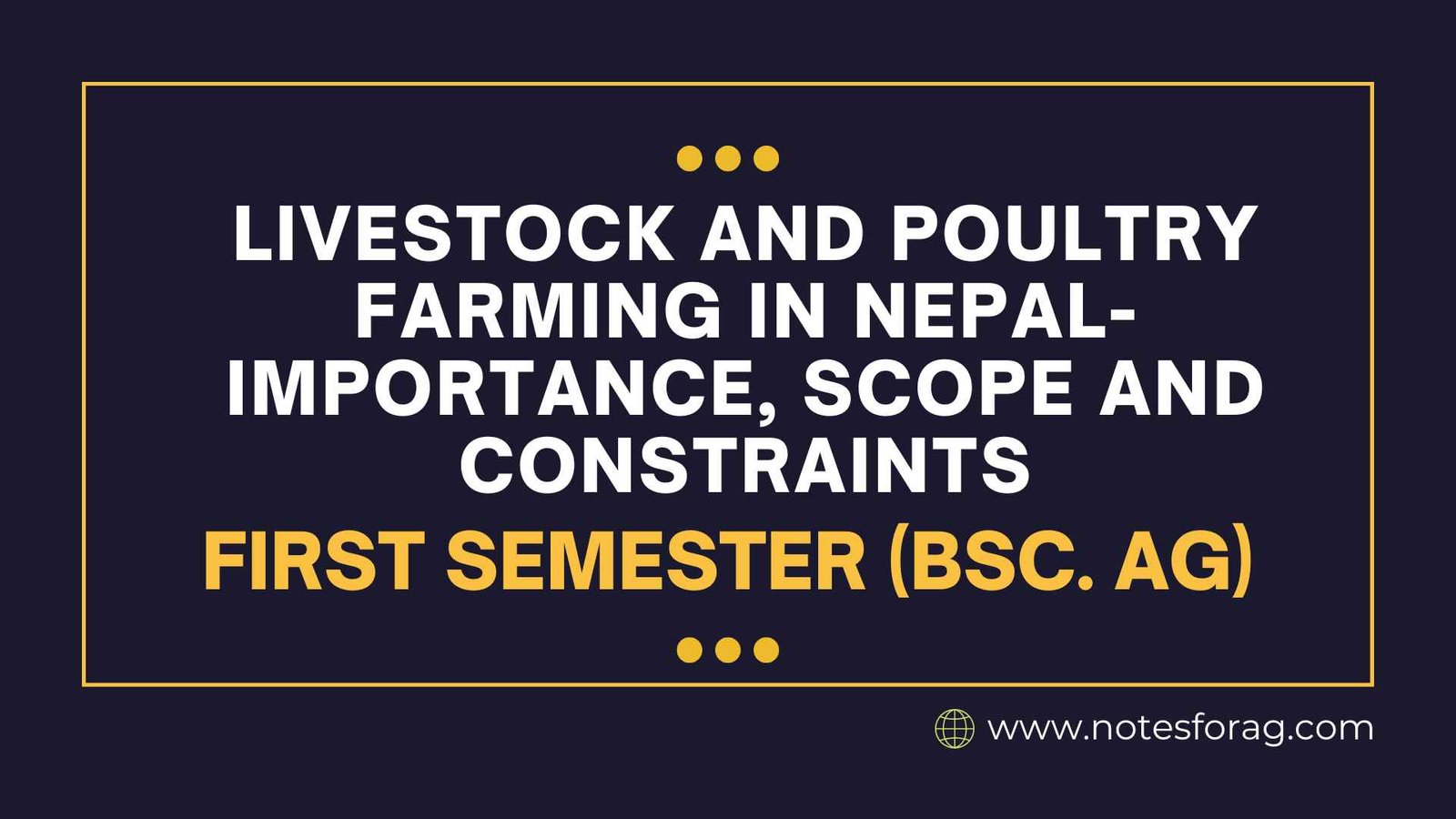Livestock and poultry farming involve the breeding, raising, and management of animals like cattle, sheep, goats, pigs, and birds such as chickens, ducks, and turkeys. The production of meat, milk, eggs, and other goods depends on these techniques, which also greatly support the agricultural economy and food security. Livestock and poultry farms serve a vital role in maintaining rural livelihoods and promoting economic growth by enhancing animal health, productivity, and welfare through efficient management, feeding, and healthcare.
Table of Contents
Livestock

Livestock refers to domesticated animals raised in agricultural settings to provide goods like meat, milk, wool, and leather. Cattle, sheep, goats, pigs, horses, and other farm animals are produced and raised to support farming operations and boost the agricultural economy.
Poultry Farming

Poultry farming is the process of raising domestic birds, such as chickens, ducks, turkeys, and geese, with the purpose of providing meat, eggs, and feathers. In order to maximize productivity and guarantee the wellbeing of these birds, it involves controlling, breeding, feeding, and providing for their health.
Importance
The importance of livestock and poultry farming are given below:
- Economic Contribution: A substantial section of the rural population depends on livestock and poultry farming for their livelihoods, which also considerably boost Nepal’s GDP.
- Food Security: These measures guarantee a consistent flow of animal products such as meat, milk, eggs, and other foods that are necessary to meet the population’s nutritional demands.
- Employment Generation: They provide both direct and indirect job opportunities, especially in rural areas with few alternative employment options.
- Cultural Significance: In Nepal, livestock are essential to many religious and cultural rituals.
- Resource Utilization: Using resources such as agricultural byproducts and feed through livestock farming helps create a more sustainable farming system.
Scope
The scope of livestock and poultry farming are given below:
- Diverse Agro-Ecological Zones: Nepal’s agro-ecological zones and varied climate make it possible to raise a wide range of livestock and poultry breeds.
- Organic Farming Potential: By utilizing its traditional farming methods, Nepal may concentrate on organic livestock and poultry farming in response to the growing demand for organic products worldwide.
- Tourism Integration: Agri-tourism, encompassing tours of cattle and poultry farms, has the potential to draw visitors and provide supplementary income.
- Export Potential: The export of animal goods, such as meat, wool, and dairy products, has room to grow.
- Technical Advancements: Productivity and efficiency can be increased by implementing cutting-edge technologies and better farming techniques.
Constraints
The constraints of livestock and poultry farming are given below:
- Lack of Infrastructure: The expansion of livestock and poultry production is hampered by poor infrastructure, which includes insufficient market and transportation facilities.
- Limited Veterinary Services: High death rates and low productivity are caused by inadequate access to veterinary care and vaccinations.
- Feed Shortage: The productivity and well-being of animals are impacted by a lack of high-quality feed and fodder.
- Disease Outbreaks: A major problem is the frequent occurrence of disease outbreaks brought on by insufficient preventive efforts.
- Climate Change: The production of cattle and poultry is impacted by the unpredictability of weather patterns and natural disasters brought on by climate change.
- Financial Constraints: Farmers are unable to invest in improved infrastructure and farming operations due to limited access to finance and financial services.
In Addition, Nepal’s economy and food security depend heavily on the raising of livestock and poultry. They support livelihoods and make a sizable GDP contribution, particularly in rural areas. These methods provide a consistent supply of meat, milk, and eggs, meeting dietary requirements and generating jobs. In addition to their practical use of resources like fodder and agricultural byproducts, livestock also have cultural and religious importance.
Numerous livestock and poultry breeds are supported by Nepal’s varied agro-ecological zones, which present opportunities for organic farming and agritourism. Additionally, there is room to grow the export of dairy, wool, and meat. But the industry also has to deal with issues including inadequate veterinary care, scarce feed, recurrent disease outbreaks, and the effects of climate change. The productivity and sustainability of livestock and poultry production in Nepal can be improved by addressing these issues through focused legislation, the construction of infrastructure, and education.
Frequently Asked Question(FAQ)
Why is livestock and poultry farming important in Nepal?
For the economy and food security of Nepal, livestock and poultry production is essential. They ensure a consistent supply of meat, milk, and eggs, meeting nutritional demands and making a substantial contribution to the GDP. They also support livelihoods in rural regions.
What is the role of livestock and poultry farming in rural livelihoods?
In rural regions, raising livestock and poultry helps to sustain livelihoods and lower poverty by offering direct and indirect work opportunities. In Nepalese communities, they also hold a major cultural and social importance.
Related Articles

